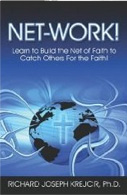"The First Beast"
General idea: This passage is about the contrasts of Satan versus the distinctions of Christ. Satan seeks to counterfeit and mock God. This is about the forgery of making what is evil and hideous seem attractive. The beast demands our worship and declares war upon the faithful! This passage is cut from its verse references to its context, as it really starts at the close of chapter 12, where Jesus asks us to trust Him as the dragon stands on the shore of the sea. John now sees another vision-a beast rising out of the depths of the sea. This beast had seven heads, ten horns, and ten crowns on each of its horns. There were blasphemous names written on it. This beast looked like a leopard with the feet of a bear and the mouth of a lion. This beast gets its power from the Dragon. One of the heads was wounded but then was healed. The world marvels and worships this beast, deceived by its power and presence.
Vs. 1-4: Contexts: During this time in history, Nero died (in 68 A.D.) by either suicide or murder, and a rumor was instituted that he would come back in vengeance on the aristocracy to destroy them and all those who doubted or came against him. Many Romans were in fear of his expected return. Then, during Domitian's reign (81-96 AD), a cult leader, claiming he was Nero, rose in power in
Even though this passage is about the contrasts of Satan, many commentators have seen this figure of the beast as the person of the antichrist. However, there are some severe interpretive problems with this view. For one, the passage does not say it is the antichrist; nowhere in Revelation is there an antichrist personality other than representations of those who oppose Christ and fight His people. This points us to an antichrist in purpose but not a specific personality. (The Greek word for antichrist means "opponent to the Messiah;" in Scripture, it means anyone who opposes Christ, not necessarily a specific person - 1 John 2:18-22; 4:3; 2 John 1:7. In 2 Thess 2:3, "man of lawlessness" refers to rebellion, but again, not to a specific person. What some commentators have done is take several passages out of their context and string them together to create their position). In this way, anyone who opposes Christ is an antichrist as it is defined elsewhere in Scripture and by John. Thus, many read into the passage their views rather than seeing what this actually says in the original language and what would be understood by John's readers in this type of literature and images.
John draws from Daniel's four beasts (Dan. 7: 3-7) which represented four succeeding empires. Most scholars assume they are
Word and Phrase Meanings
· Dragon stood…shore of the sea… coming out of: Meaning a vicious, killing monster and refers to the attempt of Satan to mock God by attempting to create His creation. This is also an image of summoning a powerful demon. Satan brings his representation out of the chaos of the sea counter to God's creation out of the chaos of nothing. It is interesting to note that Satan cannot create matter or bring something from nothing; he can only recruit, manipulate, and deceivingly use what God has already made, turning it into bad (Gen. 1; Col. 1:15-17; Rev. 11:7, 12:9,17; 13:15).
· Beast coming out of the sea: This is meant to represent a messianic figure. Sea is a Jewish metaphor for what is frightful and terrible; it was also a colloquialism (saying) for a dwelling for monsters and things inexplicable and/or hostile (Job
· Beast was a maxim meaning a persecuting power and/or a people who are demonic and evil. This term does not denote a singular person being an antichrist although the theme as John uses in 1 John does apply as opposing Christ. These two metaphors, beast and sea put together in this literature type refer to the tenacity, fierceness, and repulsiveness of this beast. In John's time this also represented the Romans or any secular, pagan authority because
· Ten horns … seven heads … ten crowns: Each of these is a metaphoric parallel to the nature of Christ. For example, horns means leadership, power, and authority; head is wisdom and position as well as domination; ten crowns is counter to Christ's many crowns (Ex.
· Blasphemous name: Infers that his name is not worthy, whereas in contrast, Christ is worthy. Roman emperors had a tendency to take the titles of deities for their title, such as Domitian, who took it to an extreme (perhaps a contemporary of John, if a late date is in view of his penning of Revelation), was addressed as Dominus et Deus noster meaning "Our Lord and God" (John 1:14; Phil 2:9-11; Col. 2:9; Rev. 19:12).
· Leopard…bear …lion: John is drawing images and characteristics from Daniel's four beasts. Leopard also meant "being swift" and "military conquest;" bear meant "ferocious strength" and "stability;" and a lion meant "power" and "dominion" (Dan. 7:2-7; Rev. 12:3; 17:8-11).
· Dragon gave the beast his power: Satan empowers the beast whereas in contrast God empowers and is Christ, who empowers us (John
· Fatal wound…been healed: A counterfeit theme to the Resurrection of Christ that is the proof and means for evangelism, but Satan can't duplicate it so some how it is imitated or faked. Some see this as the recovery power of the beast. This is also of the theme of Nero.
· Was astonished: Somehow, this is the means that the beast uses (trickery) so people become amazed with and are attracted to be followers, going away from God and goodness (Rev. 17:8).
· Men worshiped: This is also a counterfeit to true worship whereas, in contrast, people worshiped what is wrong and evil. People are attracted to the conniving and scheming of evil rather than to the centrality of Christ (John
· Who is like the beast: A counterfeit of praise, taking praise that is meant for God, twisting and perverting it (Ex.
· Who can make war against him? This may be an expression of the tenacity, persistence, recovery, and resilience of evil, as we say now, "you can't fight city hall."
Thoughts and Applications
This passage was written specifically to the seven churches who were facing such evil worldly persecuting powers such as Rome, which invaded and destroyed Jerusalem, then oppressed those in Asia Minor; also, the evil local officials and the Parthian invaders that persecuted and even destroyed the seven churches as described in Revelation, chapter nine. But, this passage also applies to us on how evil and worldly people operate. It is a blueprint of how people are deceived and how governments and evil people can oppressed because the people let them. This is what Daniel and his friends experienced personally, what the nation
This beast wants people terrorized into submission; in contrast, Christ offers grace and forgiveness motivated by His love-two, directly contrary approaches of attracting people, one of hideousness and one of love. Ironically, even though this beast is extremely repulsive and scheming, people desire it and its ways rather than goodness or contentment. Why do people worship what is evil, ugly and terrifying? Perhaps, it is the attraction of power and the removal of conviction. Sin, in its hideousness, is more alluring to some than being convicted.
The Four Prevailing Views
The Preterist view: They see the dragon in this passage as an invading power looking for allies in its evil quest. That power is
The Futurist view: They see this passage as a parallel to Daniel chapter seven, and an amalgamation of Daniel's four beasts, meaning the Gentile nations and their collaboration and future attack on
The Idealist view: They see this passage as a collection of the succession of political and social evils coming together for evil purposes in various times and places. The characteristics, such as the lion and bear, are seen as the activity of Satan and legislative actions of evil, persecutions, oppressions, or the rise of Satan against the world and the Church; some see this as corruption in the Church, or false religions, or both. The sea is seen as the Gentile world, corruption and paganism versus faithfulness and God (Is.
The Historicist view: They see this passage as an allegory involving the four beasts of Daniel, chapter seven, who blaspheme holiness and those who are faithful. The beast is seen as Roman paganism and the priests who propagated it. Others have seen this as the Catholic Papacy and/or oppressive ecclesiastical power, or perhaps the emperors of
The Essential Inductive Questions (for more Inductive questions see Inductive Bible Study):
1. What does this passage say?
2. What does this passage mean?
3. What is God telling me?
4. How am I encouraged and strengthened?
5. Is there sin in my life for which confession and repentance is needed?
6. How can I be changed, so I can learn and grow?
7. What is in the way of these precepts affecting me? What is in the way of my listening to God?
8. How does this apply to me? What will I do about it?
9. What can I model and teach?
10. What does God want me to share with someone?
Additional Questions:
1. Have you even been a victim of forgery such as being given a fake bill of money and then not being able to use it? How is this like good leadership versus bad leadership?
2. Is charisma important in leadership? If so, how and why? Have you ever been attracted to a charismatic leader, such as a J.F. Kennedy or …? Why? Why are so many people attracted to charisma when, in many cases, there is little or no substance behind it?
3. How would you contrast the character of Satan versus the distinctions of Christ? How and why does Satan seek to counterfeit and mock God? How have you seen this done?
4. How and why do evil and hideousness become attractive to some? Why does Jesus ask us to trust in Him when the dragons of circumstances stand at the shore of our lives?
5. How do you suppose an antichrist personality would get people to marvel and worship him? How can such a person deceive you and your church? (Consider that most people are attracted to power and presence of personality and not to substance!)
6. Why did the people worship this beast while at the same time, be callous and uncaring of the real, Holy God? How do we do this in the church today?
7. Why would the
8. Who or what do you think the antichrist is and means? Now Read 1 John 2:18-22; 4:3; 2 John 1:7, what do you think now? Why do some Christian groups think it is a specific personality or person, claiming that Hitler,
9. John may be borrowing from the news of his day, popular myths, and this form of apocalyptic literature to make his point. So, why does he do this? Does this add to the veracity of Scripture or take it away for you? Have you considered that God uses us and our culture to make His point, and that His Word is still inerrant?
10. How can the fact that Satan cannot create matter or bring something from nothing help keep your confidence in Christ and not in circumstances, even the oppression and evil that comes against you? How can you guard yourself from the manipulations and deceptions of things that are alluring and wrong?
11. If people get caught in vain speculation, do you think that they miss the point that Christ has for them? Why is it important that we look at what the symbolisms refer to in historical context and meanings and not read modern meanings into them? What can you do to prevent yourself from being taken in by speculations rather than seeking real substance and meaning in Scripture?
12. How does this passage show us how Satan works so we are not tricked or misled into his game? What can you and your church do to educate people about Satan's ways and prevent them from being enamored by empty, charismatic personalities or evil schemes?
© 2006 R. J. Krejcir Ph.D. Into Thy Word Ministries www.intothyword.org













